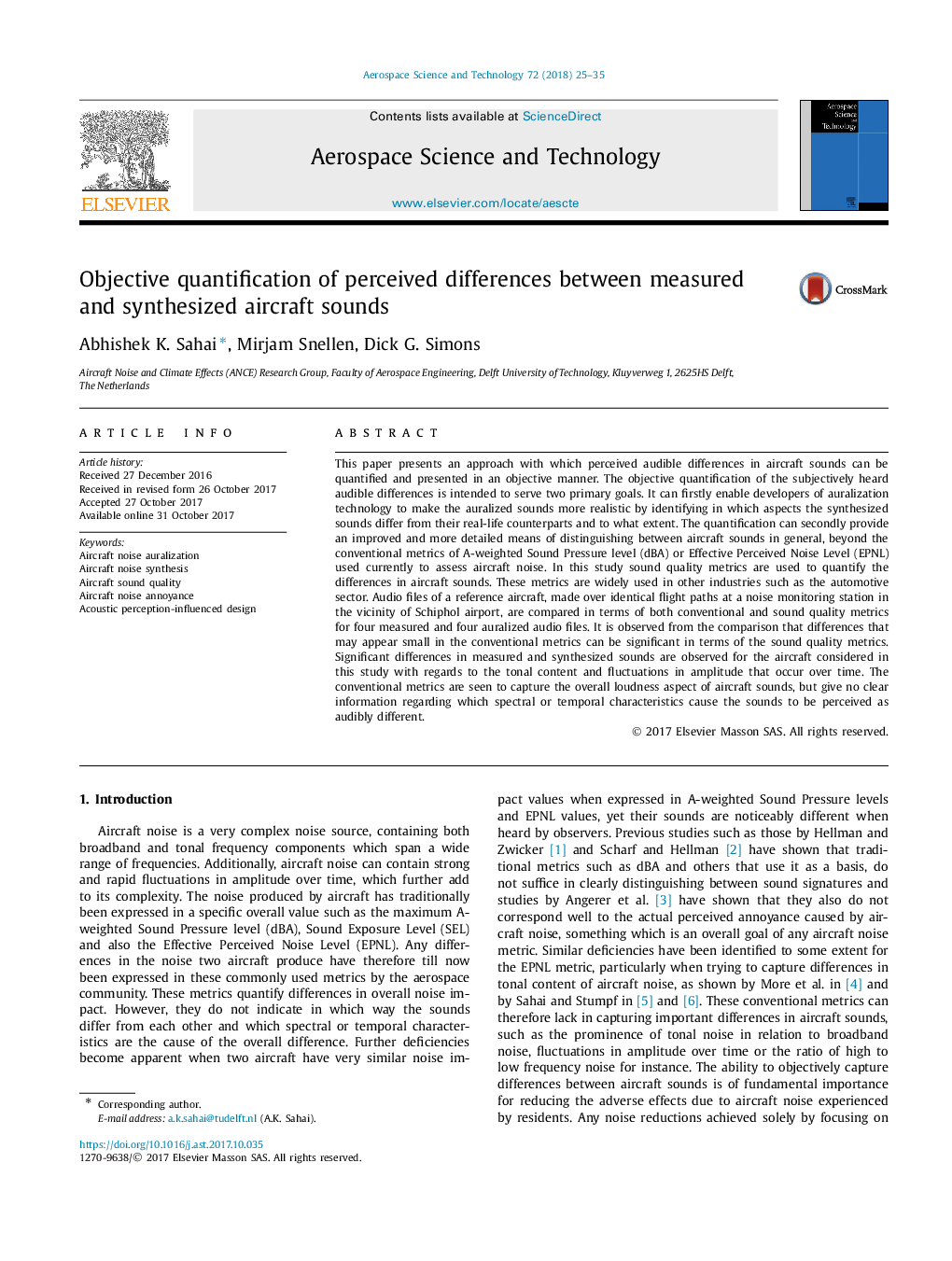| Article ID | Journal | Published Year | Pages | File Type |
|---|---|---|---|---|
| 8058204 | Aerospace Science and Technology | 2018 | 11 Pages |
Abstract
This paper presents an approach with which perceived audible differences in aircraft sounds can be quantified and presented in an objective manner. The objective quantification of the subjectively heard audible differences is intended to serve two primary goals. It can firstly enable developers of auralization technology to make the auralized sounds more realistic by identifying in which aspects the synthesized sounds differ from their real-life counterparts and to what extent. The quantification can secondly provide an improved and more detailed means of distinguishing between aircraft sounds in general, beyond the conventional metrics of A-weighted Sound Pressure level (dBA) or Effective Perceived Noise Level (EPNL) used currently to assess aircraft noise. In this study sound quality metrics are used to quantify the differences in aircraft sounds. These metrics are widely used in other industries such as the automotive sector. Audio files of a reference aircraft, made over identical flight paths at a noise monitoring station in the vicinity of Schiphol airport, are compared in terms of both conventional and sound quality metrics for four measured and four auralized audio files. It is observed from the comparison that differences that may appear small in the conventional metrics can be significant in terms of the sound quality metrics. Significant differences in measured and synthesized sounds are observed for the aircraft considered in this study with regards to the tonal content and fluctuations in amplitude that occur over time. The conventional metrics are seen to capture the overall loudness aspect of aircraft sounds, but give no clear information regarding which spectral or temporal characteristics cause the sounds to be perceived as audibly different.
Related Topics
Physical Sciences and Engineering
Engineering
Aerospace Engineering
Authors
Abhishek K. Sahai, Mirjam Snellen, Dick G. Simons,
